What better way to kick off the new year than with a bunch of chimpanzees?!
Chimp Haven is a national chimpanzee sanctuary located 22 miles southwest of Shreveport, Louisiana in the Eddie D. Jones Nature Park. My boyfriend and I have been moderately obsessed with monkeys and apes for awhile now (yes, there’s a difference – learn about it!).
While randomly trolling the Internet for monkey pictures on a lazy Saturday morning, we stumbled upon Chimp Haven’s website. And unlike the other sanctuary we follow and support, the Born Free USA Primate Sanctuary, Chimp Haven opens its doors to the public a couple times a year.
We attended a “morning edition” of Chimp Chat & Chew at the nonprofit sanctuary last month. This event included a behind-the-scenes tour, staff presentation, breakfast, and an up-close visit see the sanctuary residents. Most of the residents come to live here after being retired from research laboratories, and others are rescued people who’ve unsuccessfully tried to keep chimps as pets. These programs last for two hours and cost $50 for adults and $25 for children.
The sanctuary entrance was tucked away and unassuming. We pulled up to the gate and called the office on the intercom to be let in. There were only a couple other cars in the lot, and only three other people waiting to attend the event in the lobby area. The lobby walls were lined with photographs and maps of the sanctuary’s construction back in 2003, which began on 200 acres of forest donated by the residents of Caddo Parish, Louisiana
One staff members, Andrea, led us five chimp enthusiasts to the back of the facility to collect on the breakfast we were promised. Breakfast consisted of mini egg & sausage sandwiches, bagels, fruit, coffee, and juice. Once we were settled around the table in the conference room, Andrea cued up a power point presentation and told us about how the sanctuary has grown over the years.
Then Skye, a chimp caregiver, gave a presentation about the most common facial expressions chimpanzees make and what they mean. Both staff members were incredibly well-educated about chimpanzee behavior and very open to answer all our questions.
One of the most social chimps, Henry, “interrupted” the presentation by climbing to the top of the tallest structure in his enclosure and capturing the attention of all of us gazing out the window. It was feeding time, so we were led us out onto the roof to watch the staff toss bananas, onions, cucumbers, oranges, and cabbage down to the chimps in two separate enclosure areas.
It was a chilly day in January (about 40-degrees Fahrenheit), so most chimps briefly popped out of their enclosure windows to grab the produce and pop back inside. Some of the more agile chimps actually caught the fruits and vegetables in their hands as they plummeted down from the roof.
Chimps climbed to the top of their wooden structure, wandered around to get our attention, and basked in the warm sunshine. One castrated male chimp slung a pink and brown stuffed monkey on its back and carried it around like it was his own baby. Andrea said that Grandma, a 60-year-old chimp, loved playing with stuffed animals too.
After feeding time, we boarded an open-air, tractor-pulled wagon to tour the grounds. Although we didn’t see any chimps playing in the woods (probably because of the cold weather), they apparently have free reign of the open space. The trees here aren’t exactly tropical, but it’s nice for them to at least have some trees around to climb and play on.
The sanctuary is expanding, which is great news considering how many research laboratories are closing and how many more chimps are in need of a safe home. We saw lots of construction was going on as we rolled by on the wagon near the sections for quarantined chimps infected with Hepatitis C, HIV, and AIDS. The sanctuary has around 70 residents now, so I’ll be curious to see how many more move in after the new construction is complete.
There are a few baby chimps living at the sanctuary, not because Chimp Haven breeds them, but because sometimes vasectomies just don’t stick. Andrea told us the story of one particular male who had a vasectomy three separate times and still impregnated a female. Clearly, that’s a body programmed to procreate! Although it was only through a fence, I did catch a glimpse of the ridiculously adorable Valentina Rose, a one-year-old chimp that I recently donated to as a Christmas gift.
The tractor pulled us along a small river, which serves as a protective barrier since chimps aren’t able to swim. Andrea encouraged us to take as many pictures and ask as many questions as we wanted so we could learn as much about the habitat and species as possible.
When the wagon ride came to an end, we filed back into the presentation room to view some of the artwork created by the chimps. I’m not ashamed to admit that their abstract paintings are on par with my own. They had a slew of merchandise available for purchase, including t-shirts, sweatshirts, polos, artwork prints, and postcards. Since it’s all just stored in tubs and carried in on demand, I couldn’t help but think a little store would be a great addition to the visitor’s center.
At the end of our Chimp Chat & Chew event, I felt more attached to these primates than I ever had before, and more educated about their behavior, mannerisms, and challenges. As we were getting our last photographs of the chimps and saying our goodbyes, Andrea mentioned a resident volunteer program that the sanctuary offers. The sanctuary has a couple trailers available onsite for volunteer lodging, as long as you put in 20 hours per week – something I would like to try later this year.
If you’re interested in learning more about Chimp Haven’s volunteer program, reach out to Education Specialist, Andrea Falcetto at 318-925-9575 or [email protected]. To donate to Chimp Haven, visit the sanctuary website or check out the chimps’ wishlist of desired toy, food, nesting, and sensory enrichment items.
So if you ever find yourself anywhere near northern Louisiana or eastern Texas, check Chimp Haven’s website to see if they’re hosting a public event at that time. Or simply plan a road around their schedule, like we did, to experience a truly unique habitat and support a great cause.
It’s not a zoo, not a roadside attraction, and not a breeding ground. It’s a safe, caring, and comfortable home for wild chimps who were deprived of a natural life and have been given a second chance. I found inspiration at Chimp Haven, which is the best souvenir I could ever hope to bring back home.


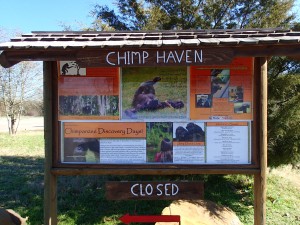
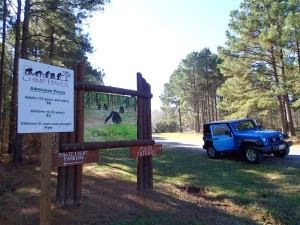
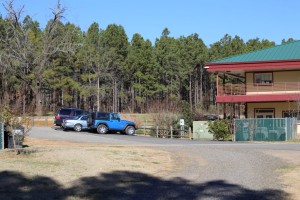
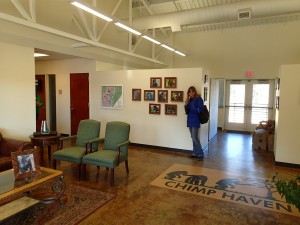
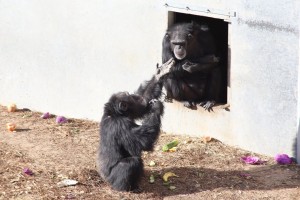
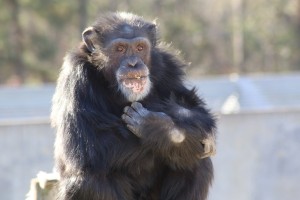

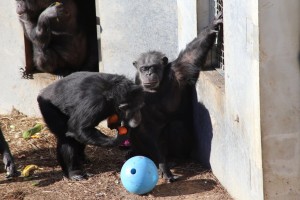
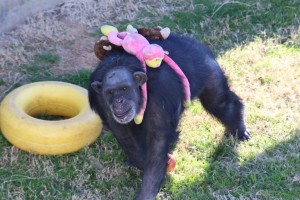
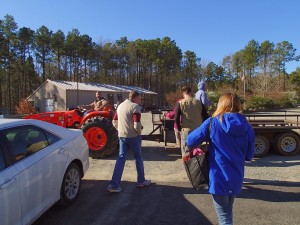
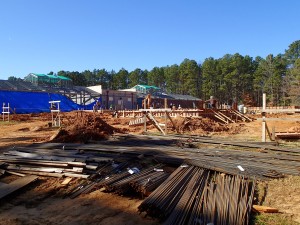
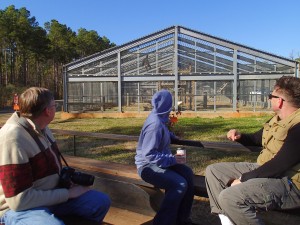
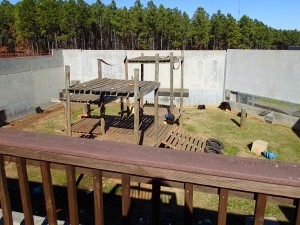
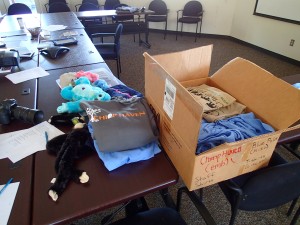
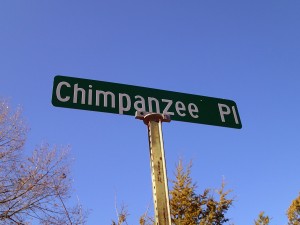
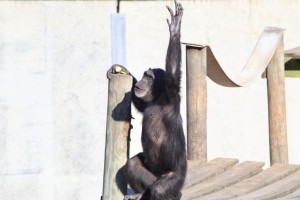
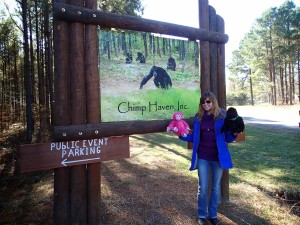
Pingback: Gorillas in Georgia?! A Tour of the Dewar Wildlife Trust Sanctuary | Alyssa v. Nature
Pingback: Exploring a Monkey Jungle in Miami | Alyssa v. Nature
I just tried you link to the website for the wishlist and it didn’t work.
https://chimphaven.org/about-us/wish-list/
The above link goes straight to Chimp Haven’s website and if you click on Amazon in bold orange it will take you to their wishlist.
Thanks for letting me know, Suzy. Hope you’re able to donate some great things to help out these chimps and the great people who care for them!